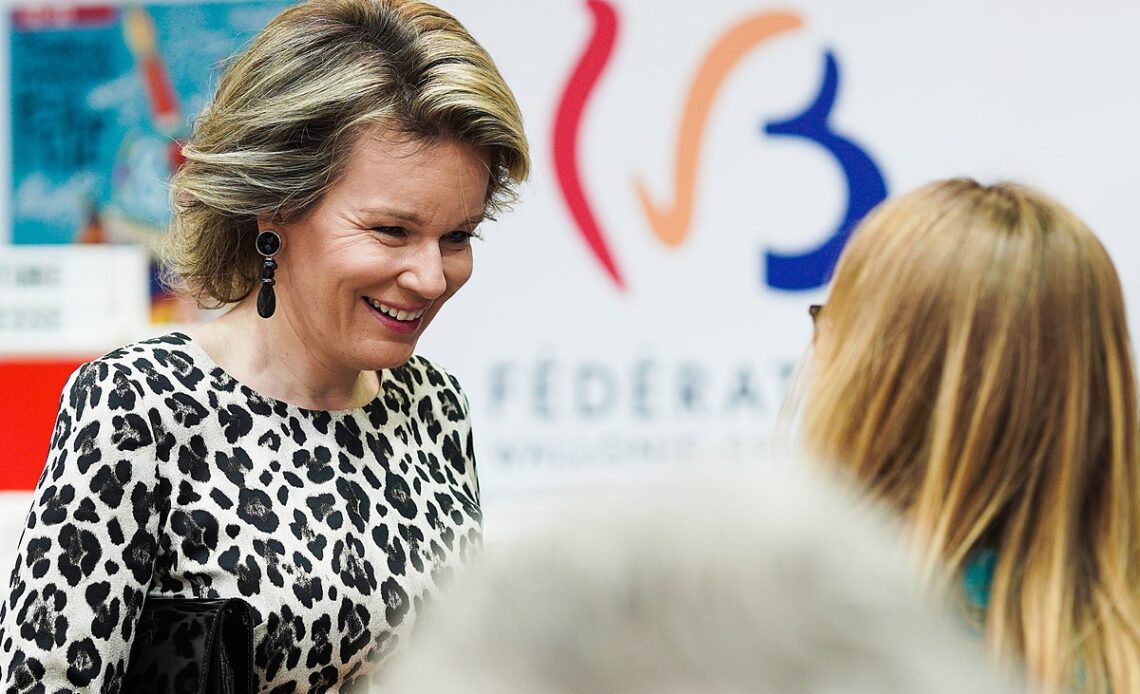
Queen Mathilde of the Belgians has arrived in Bangladesh for a three-day visit to the country in her role as an advocate for the United Nations’ Sustainable Development Goals.
Her Majesty landed in Dhaka in the morning of Monday, 6 February and was welcomed at the airport by the Bangladeshi Minister of Foreign Affairs, Abul Kalam Abdul Momen, and the Belgian Ambassador to Bangladesh, Didier Verhasselt.
Her first stop was Fakir Apparels, a garment factory that has become a leading role model in the country regarding sustainability in the textile industry and “is committed to meeting all social, ethical and environmental standards.”
The garment industry is the second largest in the world and has become one of the main sources of income in the Bangladeshi economy.
The Queen’s next stop was a poignant one, as she visited a Dhaka slum to meet pupils in a UNICEF learning centre, which aims at slowly reintroducing pupils that have dropped out of school into the main educational system of the country.
The second day of the visit, Tuesday, 7 February, was dedicated to the delicate subject of the Rohingya refugee crisis. For that, she travelled from Dhaka to Cox’s Bazar, where she visited Kutupalong’s refugee camp.
The camp is the biggest refugee camp in the world and has seen pass some of the more than a million refugees that have crossed into Bangladesh from Myanmar since 2017; half of those are under 18, which, in most countries, is considered a minor, something that generates several extra issues.
Their conditions are often desperate, which is why the effort to manage the camp is a collective one. Queen Mathilde met with the teachers of one of the 3,400 learning centres in the camp, which opened to offer opportunities to the more than 35,6000 children currently residing there.
She also visited a so-called “safe space,” where women and girls can come together and discuss topics or learn new skills. Some of those spaces also serve as counselling rooms, a service that is provided all throughout the camp.
Her Majesty was invited into the homes of two families who ran to the streets to see her before meeting with three Belgian volunteers, Filip, Michel and Frederik, who work in the camp.
Her last two stops in the camp were the SAFE+2 programme, a concerted effort by the WHO (World Health Organisation), UNHCR (United Nations High Commissioner for Refugees), WFP (World Food Programme) and FAO (Food and Agriculture Organisation) to preserve the ecosystem of the camp, and a facility to process waste in a sustainable way that reduces the risk of spreading diseases.
The last day will be presumably dedicated to female education and healthcare, which is another one of the SDGs’ pillars. Her Majesty is expected to make her way back to Brussels on Wednesday, 8 February.
The United Nations created its Sustainable Development Goals (SDGs) in 2015 with the aim of having actionable plans and monitoring criteria to reach a “shared blueprint for peace and prosperity for people and the planet now and into the future,” according to the UN’s resolution.
They span across many different sectors, including some that the Queen has been working on for decades, like more equitable access to healthcare, gender equality and education, which is why it wasn’t surprising when in 2019, UN Secretary-General Antonio Guterres selected her to sit on the board of Members of the Advocates council for the promotion of the SDGs.

